Translate
Saturday, May 31, 2014
"You'll Never Work In This Town Again!" - And Why That Really Shouldn't Bother You...
By Nelson Carvajal
There was a time when the movie theater - a temple for the cinema - was a physically domineering social hub for people; up until the 1960s, filmgoers would catch up on their world news via short subject newsreels that preceded the move and, sometimes, even congregated at after-parties to discuss or argue over that night's feature film.
These days, with dark auditoriums glowing with mobile phones and tablet devices, that's a hard concept to grasp. Still, it's nothing to be disheartened by. The moviegoing "social hub" has migrated from the offline experience to the online experience, and that's okay. Besides, most people get their world news from YouTube anyway.
I start with this point because there (again) exists some misguided fear--disgust, even--driven by culturally-disconnected gurus and so-called media "experts." Is it really an earth-shattering revelation that new generations of moviegoers expect more technically savvy films, up-to-date news feeds and exciting, dynamic ways to interact with movies/content? In the morosely titled "Millennials seem to have little use for old movies," Neal Gabler writes of today's young moviegoing crowd and their supposed disdain for the classics. Gabler: "They find old movies hopelessly passé — technically primitive, politically incorrect, narratively dull, slowly paced. In short, old-fashioned." Sure, I'm willing to agree that the moviegoer who plans his entire week around the midnight premiere of Fast and Furious doesn't really give a shit about a restored print of Jacques Tati's Playtime. But that has ALWAYS been the case. Before Millennials were born, there just as many moviegoers who did not know who Andrei Arsenyevich Tarkovsky was.
Broad summations that paint a weakening neo-moviegoing culture are dangerous. They're dangerous to up and coming independent filmmakers, content creators, producers, screenwriters and actors. It's like a dagger to one's artistic and moral life. As if it wasn't hard enough for struggling artists to make films AND eat, these influential gatekeeping pundits and gee-whiz sociological Cineastes are all but encouraging a white flag in the air that says one thing: Don't even bother.
I say the opposite.
Post after post, I encourage my readers (aspiring filmmakers to be sure) to embrace the changes in the new media landscape as they come along (at lightning fast speed). Consider the above example. If we're to believe that EVERY person born from this point on will be glued to their iPad, curating their own social media feed and will only look forward to new and future films...well, then LEVERAGE THAT!!! If we're to approach the movie theatre/social hub/offline vs. social media platform/social hub/online example, I'd say us indie filmmakers/content creators have the upper hand. If the theatrical model is becoming less appealing for people and more viewers are turning their heads six inches down toward their mobile device, I say bring it on. Do you really want to compete with the current, hard to break into theatrical exhibition system? I'd recommend you take your chances with Vimeo. (Note: Unless you're an Oscar-winning documentary filmmaker whose name alone can draw a tidal wave of attention.)
All signs point to a new, undefined, scary and exhilarating independent frontier. Don't be discouraged by the bitter industry players who used to have a handle on things. They're on their way out.
Where’d You Go to Film School? In My Bedroom...

By Justin Peters
WHEN David Basulto decided to become a movie producer, the first thing he did was enroll in a class at a film school in Los Angeles. The second thing he did was drop out.
Film schools “teach you a lot of theory, teach you to shoot on old, archaic systems,” he said. “They’re not cutting edge.”
The systems used at, say, the University of Southern California’s Robert Zemeckis Center for Digital Arts are anything but archaic. But Mr. Basulto’s point is worth noting in the era of miniDV digital video cameras, Final Cut Pro editing systems and YouTube auteurs with development deals. Thousands of new filmmakers are just diving in, many with the help of instructional products claiming to provide low-cost, high-impact alternatives to film school.
Sold on DVDs and CDs, with names like “Film School in a Box” and “Make Your Own Damn Movie,” these programs, often conceived by people with no formal film training of their own, offer surprisingly detailed tutorials on a variety of film-related topics: blocking, editing, even fund-raising and distribution. Priced roughly from $50 to $500, they can instill confidence without the bother of hundreds of thousands of dollars of a formal education.
Whether they can really teach how to make a good movie remains open to debate.
“You’re talking about an education process that takes the teacher out of the process,” said Michael Taylor, chairman of the film and television department at the U.S.C. School of Cinematic Arts.
“I think you do learn by doing, and we teach by doing in our film school,” Mr. Taylor added, “except it’s guided by a faculty who sort of know what they’re doing.”
Still, some established film schools have welcomed these programs as supplements to their existing coursework. “I think that the DVDs are great support materials,” said Paula Froehle, associate chairwoman of “below the line” curriculum — technical skills like lighting and editing — at the film department at Columbia College in Chicago. “Certainly there are times that I reference them, because I think they can function as a more dynamic textbook than a lot of the written material that’s out there.”
Virtually all the available filmmaking software rejects traditional, theory-based education, offering instead what purport to be practical crash courses in how to make a cheap but professional-quality movie. “Film School in a Box,” a video editing program, for instance, offers its users 15 hours’ worth of unedited footage from “The Confession,” a suspense drama that was shot in one take from 11 different cameras. Using the completed film as a point of comparison, users can construct their own version.
“Let them learn to edit movies, not old TV,” said David Kebo, the program’s co-creator and co-director of “The Confession.” He means that literally: Mr. Kebo tells of working on another feature, “Mojave,” with an editor whose film-school training in the 1990s began with recutting old episodes of “Gunsmoke.”
Other programs derive from a sense that existing instructional materials are incomplete. When the director Per Holmes, for instance, decided to shift from nonlinear music videos to traditional narrative films a few years back, he ran through the existing literature in two weeks. Unfulfilled, he decided to create his own master class. The result was a comprehensive instructional DVD set called “Hollywood Camera Work,” which teaches advanced blocking and staging techniques. The course resulted from a “tremendous amount of watching, pondering and systematizing,” Mr. Holmes said.
Offhand dismissiveness of traditional education is an article of faith among the makers of such software. “You have the people who come out of the other end, and they don’t know anything, and they’re not ready to make movies,” said Mr. Holmes, who said he would rather not bash film schools, many of which use his product.
To Jason J. Tomaric, 30, a film director and creator of a DVD course called “The Ultimate Filmmaking Kit,” “the big problem I’ve seen in film schools is that you’re taught by academics who have never made a movie before, let alone had one distributed.”
Mr. Tomaric’s DVD, like most of its competition, claims to offer hard-won lessons from the trenches of independent film — in this case from his production of a feature film called “Time and Again,” which cost $2,000 to make and was released in 2003. “We actually did it,” he said. “We made a movie that got distributed and made a profit.” Not surprisingly, the distrust runs both ways. Many educators say that a few hundred dollars’ worth of software cannot replace years of study, never mind the network of industry connections that often pave the way from school to a first job in the industry. “Asking what role does the film school play is like saying what role does the liberal arts college play if one has access to an encyclopedia?” Mr. Taylor said. “The idea that you can do it yourself is, I think, rather ridiculous.”
Tom Denove, vice chairman for production in the film, television and digital media department of the film school at the University of California, Los Angeles, contended that educational software often misses the real point of making a film: the inherent power of a narrative. “What’s lacking in so many films from people without a film-school education isn’t the technical expertise,” he argued. “It’s the ability to turn that expertise into a compelling story.”
Even so, democratization appears to be an irreversible trend in cinema. The thousands of movies each year now submitted to festivals around the world are testimony to a guerilla mentality that says no one needs official permission to make a film; and the advocates of teaching software often see themselves not so much training, but liberating new filmmakers.
“We try to inspire people to understand that they do not just have to work for Paramount or Sony — that does not necessarily validate their lives,” said Lloyd Kaufman, the longtime president of Troma Entertainment, whose book-and-DVD combination program, “Make Your Own Damn Movie,” offers lessons on everything from script conferences to presentations to potential investors to creating inexpensive yet realistic special effects.
As Mr. Kaufman sees it, those who want to make a movie should, and avoid the studio system entirely: “They don’t have to pitch movies to 23-year-old idiots who have never heard of John Ford or Charlie Chaplin.”
http://www.nytimes.com/2007/02/11/movies/11pete.html?_r=0
No Budget? No Stars? No Problem! How To REALLY Sell A Film At Cannes...
By Mairi Mackay
(CNN) -- Away from the manicured glamor of the Croisette, there's another Cannes -- a Cannes that lies beneath. Beneath the red carpet of the Palais du Festival in the basement, that is.
It's a seething, throbbing film market alive with b-movies -- low-budget features with no big name actors attached -- often horrors, thrillers, erotic movies or "mockbusters" (more on those later).
THIS IS THE CANNES YOU THINK YOU KNOW ...

Eva Longoria stuns on the red carpet at the premiere of "Saint Laurent" at Cannes 2014.
Andreas Rentz/Getty Images
BUT THAT'S JUST CANNES FOR THE A-LISTERS -- THIS IS WHAT IT'S LIKE FOR EVERYONE ELSE ...
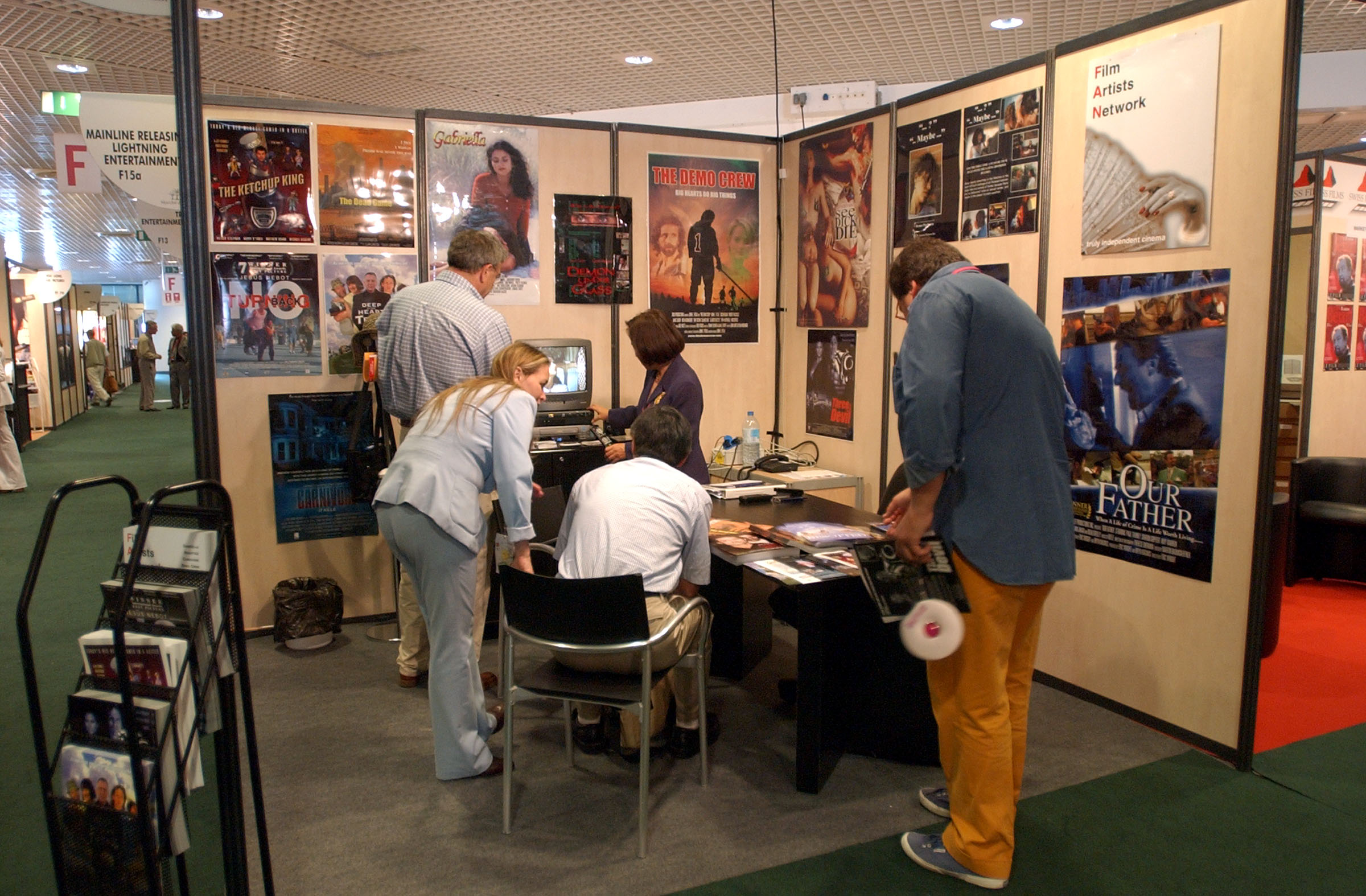
People visit the Marche du Film at Cannes 2014.
GUILLAUME BAPTISTE/AFP/Getty Images
It's a galaxy away from the movie screenings of the Official Selection -- the elite group of films chosen by the festival's selection committee from the thousands submitted each year -- of which just 18 go into competition for the feted top prize, the Palme D'Or.
THEY MOSTLY LOOK LIKE THIS ...
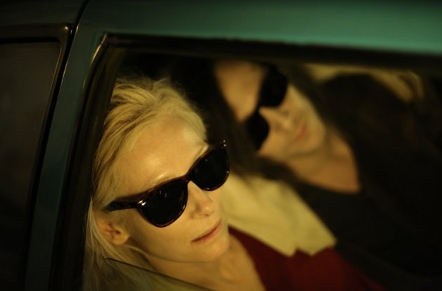
Tilda Swinton in Jim Jarmusch's impossibly cool vampire flick "Only Lovers Left Alive," which was in competition in 2013."
From Sony Pictures Classics
OR LIKE THIS ...
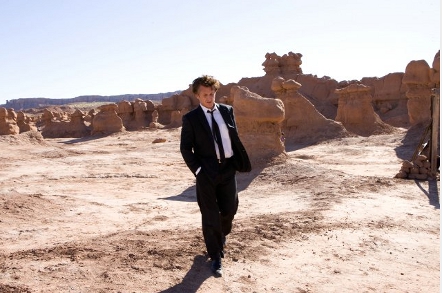
Sean Penn in Terrence Malick's 2011 Palme D'Or winner "The Tree of Life"
From Fox Searchlight Pictures
So if you find yourself not among those with Nicole Kidman on speed dial and if your budget is a few zeros short of a few million, then head to the Marche du Film you must, to make or break your fortune.
Although it's in fact one of the biggest film markets in the world, in reality it's just a sprawling global bazaar, where filmmakers and distributors come and set up stalls and negotiate. But instead of selling electronics or questionably-sourced handbags, they sell movies. Lots and lots of movies.
FILMS LIKE THIS ...

"
Courtesy Troma Entertainment Inc
AND THIS ...
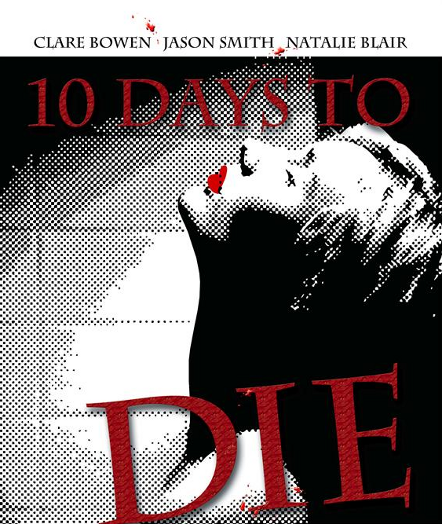
Thriller "10 Ways to Die." It asks: How far would you go to become famous?
From East End Films
In 2013 alone, producers, distributors, financiers, video-on-demand providers and other representatives from more than 1000 companies in 108 countries (including places as far-flung as Albania and French Guiana) came together to haggle over 5,364 films, according to official figures.
So, how does an ambitious filmmaker get noticed in this mass of movies? We asked a couple of Cannes veterans and a young Welsh man who made a splash at Cannes a couple of years ago with a Zombie movie called "Colin" that he made for $70.
STIR UP SOME CONTROVERSY ...

CNN
Rupesh Paul Productions have announced that they are making a thriller based on the disappearance of Malaysian flight MH370. The film's promotional pamphlet says that it "tells the story of five people who seek revenge for the death of their loved ones. They hijack a plane... " Paul denies that the timing of the movie could be considered offensive of the families of the 239 men, women and children aboard the airliner that disappeared on March 8.
IF YOU CAN'T MAKE A BLOCKBUSTER, MAKE A MOCKBUSTER ...
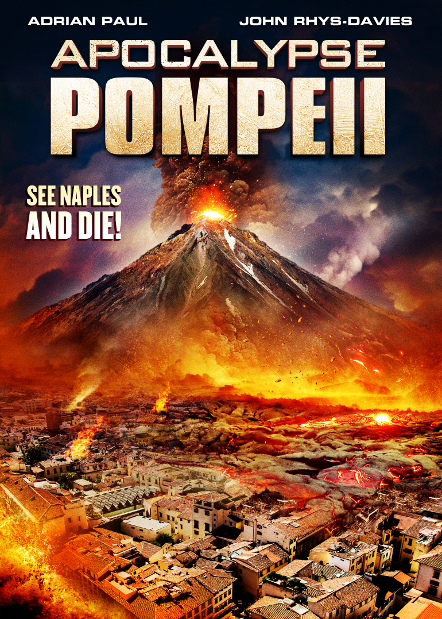
Courtesy The Asylum
Paul Bales is a partner at The Asylum, a movie production and distribution company based in Burbank, California. The Asylum is known for producing low-budget movies (around $500,000) that riff off big-budget blockbusters and are often released around the same time.
On the books this year are "Sleeping Beauty," a twist on Angelina Jolie movie "Maleficent," and "Apocalypse Pompeii," another take on Paul W.S. Anderson's disaster epic "Pompeii," which cost between $80 to $100 million to make, according to Forbes.
"We would love to be able to take credit for the mockbuster. The practice is called drafting ... it's been done almost since the industry started. Just like in bike racing, one racer will ride behind a faster racer and they benefit because there is less wind.
"We've Just been a little more outrageous. Our (movie) titles try to get as close as possible."
AND MAKE SURE YOU HAVE AN AWESOME POSTER ...
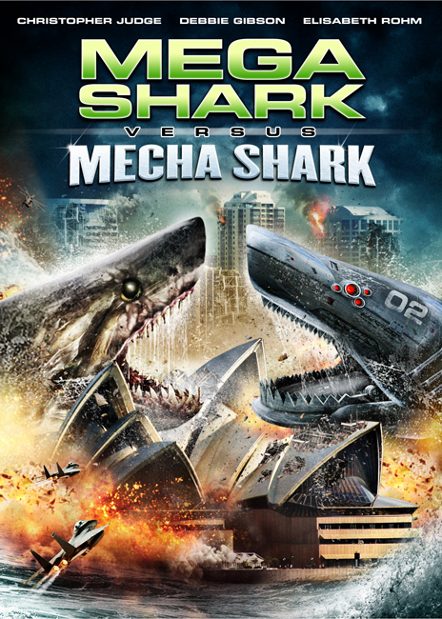
Courtesy The Asylum
Make them as outlandish as possible, adds Bales. At Cannes, the trade press pick them up and it's a great way of getting your name out there if you don' have a big budget or a high profile cast.
GET A LITTLE HELP FROM YOUR FANS ...

One of Troma's most beloved characters, The Toxic Avenger out in the street in Cannes 2014.
Ali Jalisani/CNN
U.S. indie label Troma are famous for making low-budget satires with a '50s flavor with titles like "The Toxic Avenger," "The Class of Nuke 'Em High."
The movie studio has been running for 40 years and, according to co-founder, Lloyd Kaufman, Troma's secret weapon is their fans.
At Cannes, Troma fans help the company put on the Troma Parade and street theater they've become famous for, where characters like The Toxic Avenger act out scenes from movies.
"This year, the Toxic Avenger and I have been asked to lead the zombie walk -- there's a zombie walk (at Cannes) that's been going on for about 10 years -- we've been asked to be parade masters.
"That's how we get attention because we cannot afford to take the big billboards."
NOTHING BEATS PERFECT TIMING ...

People visit the Marche du Film at Cannes 2014.
Courtesy Marc Price
Marc Price didn't expect much when he took "Colin," a zombie movie he made with a $70 budget, to Cannes in 2008. It was a movie he was proud of, but he also realized the timing of his no-budget horror happened to catch the zeitgeist at Cannes that year.
"The global economic crisis was at its pinnacle," said Price. "So, our story fit very snugly into a success out of that." The press picked it up and the rest was history: Price says the film picked up limited theatrical release in the UK, Japan, the U.S. and Australia.
The Kuchar Brothers...

By Leah Churner
"If you are out of the spotlight for most of your career there will be no need to spray hair on your head if your scalp decides to call it quits…Buying a video camera will definitely cause other artists' creative juices to flow, especially other filmmakers, who will gladly spit at you with those juices. You will be beneath contempt and can therefore work unimpeded in the lower depths while the self-inflated egos of Eros and Ektachrome drift above the surface of moral existence."
— George Kuchar, Confessions from a Cinematic Cesspool
Seen from the peanut gallery of non-Hollywood film history, today's "film versus digital" debate is more of a put-on than a sea change. Not that it isn't serious business—anyone who doubts the fall of celluloid can pay a visit to Rochester and survey the ruins of Kodak. The implications of digital media's inevitable replacement of film extend far beyond the CGI decadence in special postproduction. Soon, distribution and exhibition will be the business of computer geeks: multiplexes will stream movies and 35mm projection will become relegated to a highbrow museum fetish. The venerable film vault will yield to the giant hard drive. Still, the "film versus digital" hand-wringing, of the object (the tangible, analog, 35mm filmstrip) opposed to the algorithmic concept (the data file, an intangible string of digits) is a monster indigenous to Southern California. The apparent contest between them is an ahistoric myth. In the grand scheme, the romance of photochemistry in moving images ended long ago.
The film/digital dichotomy falls apart when we consider video. That insidious electronic bastard was born into the world of amateur and semi-professional recording in the Seventies. Before that, all motion-picture production outside of Hollywood, which included corporate and military productions, classroom propaganda, TV news reporting, police surveillance, home movies, and the majority of experimental and independent documentary fare, was created on film—primarily the substandard gauges, 16mm, 8mm and Super-8mm. Three inventions of the mid-Seventies, the Portapak, which introduced the era of electronic newsgathering, the time base correction device, which made all signals suitable for broadcast, and the videocassette, which signified the end of reel-to-reel technology, sounded the death knell for celluloid. By the mid-Eighties, video had replaced small-gauge film in all of these above contexts. The first wave of film extinction was a completely analog phenomenon.
Still lurking in the detritus are two fossils who lived through the renaissance of the amateur filmmaking empire, then abandoned it. Mike and George Kuchar have proudly marched in step with the consumer-grade vanguard for over fifty years. Their filmography, which covers big-ticket issues of the second half of the twentieth century (the atom bomb, thalidomide pregnancies, UFOs, the sexual revolution, AIDS, and F-4 tornados) is a tour of the "puny" formats: 8mm, 16mm, Video-8, Hi-8, and now MiniDV. Their story helps to sully the film/digital divide. When they switched from Bolex to camcorder in 1985, it was a paradigm shift; when they switched from analog to digital video in the Nineties, the difference was hardly discernable.
By way of introduction, Mike and George are responsible for underground classics I Was a Teenage Rumpot (1960), Born of the Wind (1962), and Hold Me While I'm Naked (1966). If famous at all, they are known for articulating the aesthetic that Paul Morrissey and John Waters would later call Trash. The defining characteristic of their work, the ironic spectacle, is a juxtaposition between the ambition of the filmmaker and the limitations of his budget and at the same time, the glaring disconnect between the transcendence of cinema and the banal shame of everyday living. Their work is both idealistic and incriminatingly autobiographical.
George and Mike Kuchar were born at Bellevue Hospital in 1942 and grew up uneasily in the Bronx. They spent most of their preadolescence at the RKO Chester and the Loews Paradise ingesting melodramas and creature features. At twelve their mother bought them an 8mm camera, and through a steady regimen of theatrical consumption and reading how-to pamphlets published by Kodak, they learned to mimic classical lighting, framing, and editing. At fifteen they completed their oldest surviving title, The Naked and the Nude, a WWII drama set in Japan, filmed at the Bronx Botanical Gardens. The trademark Kuchar approach was already in bloom when they were at this tender age. They used Kodachrome as a stand-in for Technicolor and maximized the impressionistic quality of 8mm's bulky grain. Since 8mm is silent, they used title cards (full of spelling errors) and taped the soundtrack from LPs in their parents' collection of mood music. Filmmaking was a social act; they cast their friends, neighbors, and mother. Through one of their stars, they received an invitation to exhibit their films at Ken Jacobs’s loft. There they dazzled Jacobs, Jonas Mekas, and Jack Smith, and were welcomed into the Underground fold.
In 1964, at age twenty-two, they had their first retrospective at the New Bowery Theater. Narrative films were a rarity in this crowd, and Mike and George were the first filmmakers to screen 8mm film in an art-house context. Even more conspicuous in these days of Brakhage’s Mothlight was the brothers’ way of channeling the B-directors and gimmick showmen of the Fifties with unchecked alliteration and other verbal ballyhoo. The titles of their films, Roger Ebert once said, "made Invasion of the Body Snatchers sound like something Laurence Olivier might have starred in." They certainly owed a debt to Ed Wood in this respect. The titles in this 8mm retrospective included The Thief and The Stripper (1959), Night of the Bomb (1962), Pussy on a Hot Tin Roof (1961), Tootsies in Autumn (1962), A Town Called Tempest (1963), Anita Needs Me (1963), and I Was a Teenage Rumpot. In a stroke of promotional genius, they presented one of their movies to the Eight Millimeter Motion Picture Club, but the organization of geriatric travel-film enthusiasts was quite unprepared for the graphic and pyromaniacal Pussy on a Hot Tin Roof. The club banished the Kuchars forever and ran an apology for the scandal in their newsletter.

With the passage of adolescence, Mike and George developed divergent styles. Both took jobs as commercial illustrators after high school (Mike retouched photos for a fashion magazine and George, drawn to meteorological disasters, drew clouds for the local TV weather report) and each could afford his own 16mm camera. In a reverent farewell to the home movie gauge, George wrote in 1964, “8mm is a tool of defense in this society of mechanized corruption because through 8mm and its puny size, we are closer to the dimensions of the atom…Now I'm going to make a 16mm picture called Corruption of the Damned and I'm making it in 16mm because I can't make it in 7mm.” Coincidentally or not, Mike and George abandoned 8mm for 16mm in 1965—the same year Super-8mm was introduced. Though Super-8 became the most popular amateur movie format, they never used it.
Sixteen millimeter doubled the frame size, projecting a brighter picture and providing a finer grain to capture dirt on the walls. Mike moved out of his parents' house and achieved success in 1966 with Sins of the Fleshapoids and The Secret of Wendell Samson, starring Red Grooms. Mike, the more obscure Kuchar, has always been quieter, and his style is much more difficult to pin down. Recurring themes include comic-book animation, futuristic fantasy, ancient Greek eroticism, and a fascination with garbage. Most salient aspects of John Waters’s mise-en-scène can be traced back to 1967's The Craven Sluck, which Mike describes as "one woman's struggle for identity, recognition, and a good lay, which lays bare the flabby bladders of the domestic Fleshpots, Rumpots, Sexpots and just plain Pots.”
Meanwhile George stayed at home and made the self-exploitation piece Hold Me While I'm Naked (1966), the first of many lamentations on the rudeness of his bodily frame and a number of other proto-camp specimens including Mosholu Holiday (1966), Color Me Shameless (1967), and The Mammal Palace (1969). He also began filming documentaries about artists, starting with George Segal (House of the White People) and Red Grooms (Encyclopedia of the Blessed). This, along with his out-of-town exhibitions, led to an invitation to the San Francisco Art Institute, where in 1971 he took his current position as instructor of film production. The SFAI student collaborations are weaker than his Bronx work, partially because George had less control over them, and partially because he was temporarily cured of his depression with an abundance of sunshine, sex, and drugs. Still he concocted great titles, such as I Married a Heathen, Carnal Bipeds, and The Devil's Cleavage (all from 1973). Aside from a brief stint teaching with George at SFAI in the early Eighties, Mike stayed in New York, teaching classes at the Millennium Film Workshop and experimenting with 16mm light and color studies. On opposite coasts, the brothers grew apart.

Mike and George have been able to produce such strange films for such a long time because they have always financed their own work. In the Eighties film production stopped making financial sense, so they switched to video. The first format they used was Video-8, a cassette tape eight millimeters wide. Sony and other companies stressed the "8" to hearken back to 8mm film and soften the transition from transparent celluloid to opaque, hands-off magnetic recording. Yet Mike and George quickly swore off film forever. The electronic mode had great appeal across the board, because the new camcorders were a cheaper and faster route to expression than 16mm. Compared to film, video is a virtually unlimited resource, because tapes could be erased and used over again. The ability to record for hours rendered editing in-camera unnecessary. It also sanitized the editing process, removing the razors and the goopy cement mess and freed them from the burden of syncing sound.
The camcorder became an appendage, an immediate extension of the self. Bizarrely, while the switch to video allowed each twin to fully actualize himself artistically, the abandonment of film form has made their work increasingly inaccessible to audiences. The difference between their film and video work is that their films make a mockery of aesthetics, while their videos abandon aesthetics altogether. No longer governed by the complexity and expense of film production, they have been steadily churning out inexplicable video diaries for twenty years. Image quality aside, the videos are militantly chintzy and amorphous. Mike's are protracted streams of consciousness, and it's hard for the viewer to make out heads or tails, while George's are a bit more structured and audience-friendly. George's first piece, Weather Diary 1 (1985), is a feature-length record of a one-month stint in a motel in Oklahoma’s Tornado Alley, which explores mysterious parallels between meteorological and gastrointestinal events. Several hilarious leitmotifs are present in all the tapes I've seen: a stress on the “special effects” potentialities of low-quality video (sluggishly spinning picture-in-picture boxes, tacky superimpositions); arbitrary close-ups (a tablecloth blowing in the wind) paired with blasts of maudlin strings; and disinterested interviews, in which George asks a question, then pans away to something in the middle distance as the subject voices a response. The look and feel of his analog and digital video work is the same, characterized by shabby mattes and noisy fades.
Attempting to launch a formal analysis on this work is like trying to dissect a rubber chicken—entirely irrelevant. Their permanent point of departure is the home movie. Mike and George don't consider themselves auteurs, even if Jonas Mekas labeled them as avant-garde wonders in their youth. Because they are their own target audience, they've yoked themselves to cheap and dirty formats for a lifetime. They're lackadaisical about money, and have never tried to break into the commercial sphere. When structuralism was popular in the Sixties, they presented toilet humor. Now, with fifty years under the bridge, they are regarded as camp pioneers. This is the benefit of hindsight. Today Mike and George are sexagenarians, and they still don't give a damn about anybody's attention span or digital dilemma or aesthetic preference. All they want to do is live their lives on crappy video in real-time. It may not resonate now, but who knows, something grand and invisible might be afoot.
[BLOGGER'S NOTE: George Kuchar died on September 6, 2011.]
From Eva Green To Seth Rogen's 'Happy' Face: Movie Posters Banned By The MPAA...
As Eva Green's Sin City: A Dame to Kill For poster is pulled over 'nudity', we look at other promos that have fallen foul of the censors. Warning: contains content some readers may find offensive.
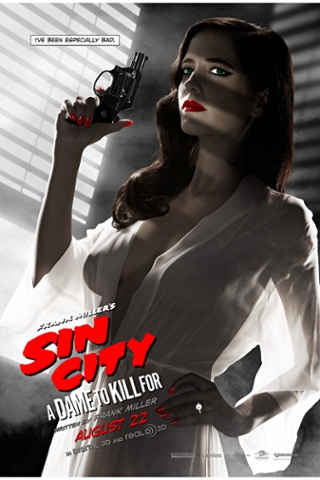
That Eva Green Sin City poster, banned for "for nudity — curve of under breast and dark nipple/areola circle visible through sheer gown." Photograph: Troublemaker Studios.
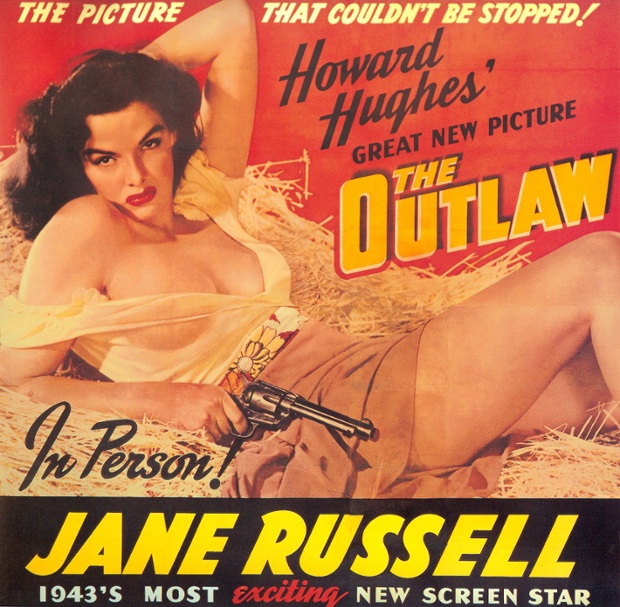
Howard Hughes deliberately stoked controversy with this 1943 poster, in order to get people talking about The Outlaw, and refused to comply with censors' demands to cut the many shots of Jane Russell's breasts.
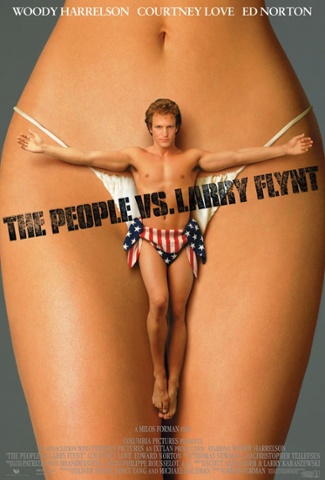
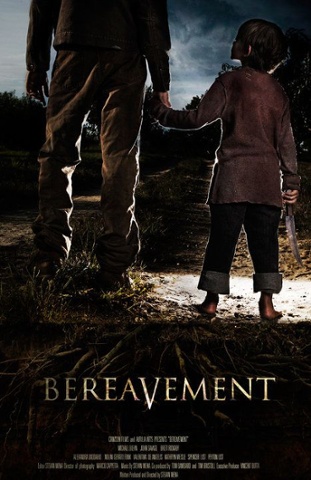
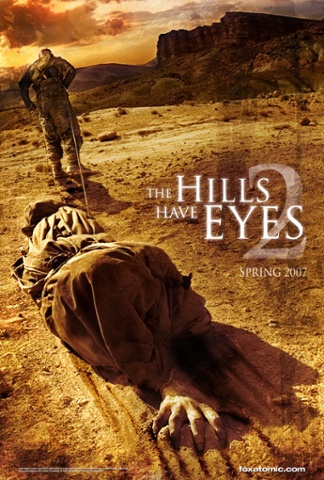
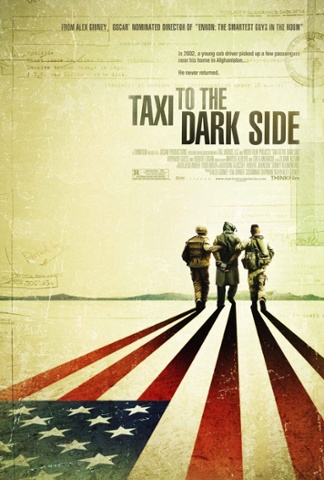
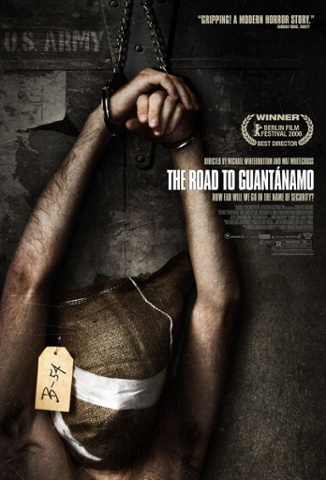
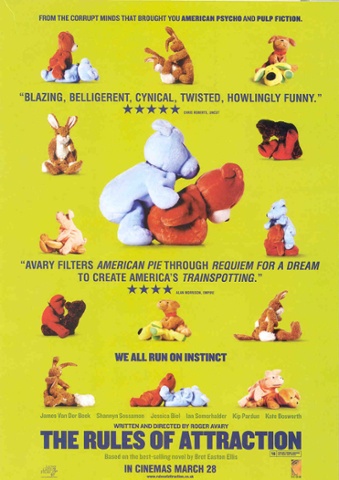
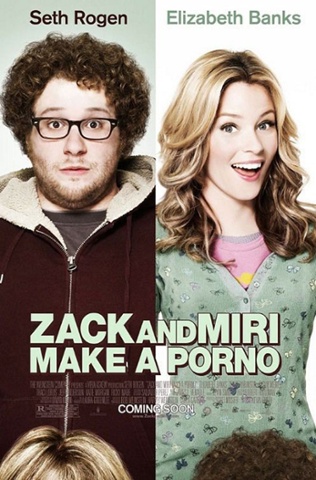
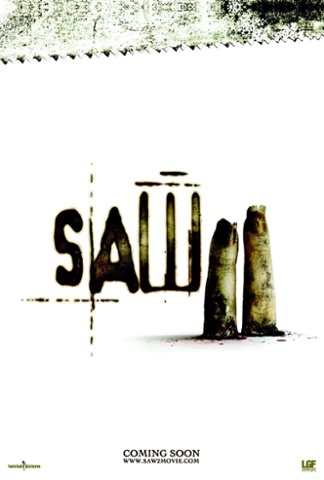
http://www.theguardian.com/film/gallery/2014/may/30/eva-green-seth-rogen-movie-posters-banned-mpaa
Low Budget Hell: Making Underground Movies With John Waters...
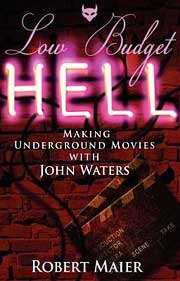
Low Budget Hell is an insider’s story of the outrageous 70s and 80s, where every rule was broken in a mad world of sex, drugs, rock & roll, and hilarious low budget movie-making. In his underground journey, Maier rubs shoulders with Johnny Depp, Ricki Lake, Andy Warhol, Jack Palance, Tab Hunter, Divine, Bill Murray, Sonny Bono, the Coen brothers, artist Jean-Michel Basquait, The Ramones, and Blondie.
Friday, May 30, 2014
3-Minute Masterpiece 2014: Tips For Digital Filmmakers...

By Lynn Jacobson
How do you get a claymation rocket to blast off?
The answer involves a needle, some fishing line and a whole lot of experimentation.
The rocket in question was one of the set pieces that my 11-year-old and I Jerry-rigged recently in the process of making a stop-motion film titled "Operation Relocation." It's one of three short films my son has fashioned in the past year, starring two intrepid clay blob-creatures named Oq and Qwerk.
Each movie has been a learning experience, schooling both of us in screenwriting, set building, filming and editing. Here are just a few of the most important things we've learned along the way:
1. Start with a story. It might be as simple as boy-meets-girl (or blob-meets-alien), but having some sense of what you want to transpire will make your project go much more smoothly.
2. Make a storyboard. Whether it's a list of scenes or a comic-strip-style series of sketches, your storyboard lets you "see" all your shots in advance. You can then group similar scenes and shoot them in bunches. You can diverge from the plan if inspiration strikes, but having an outline to return to keeps you from getting lost (and keeps your collaborators from mutinying).
3. Vary your shots. Mix long shots with close-ups, eye-level shots with bird's-eye views and perhaps even still shots with video. At times, my son made miniature versions of set pieces or characters to feign very long shots. Changes in perspective add texture, visual interest and, sometimes, an element of surprise.
4. Don't rush. Moviemaking is painstaking, even at the amateur level. Each of my son's three claymations took six to eight hours of set-building; four to six hours of shooting; and four to eight hours of editing. Trust me: Every time you slow down to reshoot a scene, polish timing or perfect lighting, you will be glad you did.
5. Wait for the right conditions. If the scene is supposed to take place on a sunny day, don't shoot in the rain. You might also have to wait to shoot retakes on a day that matches the original.
6. Keep scenes short. You never know how painfully long three minutes can be until you watch a bunch of homemade shorts in a row. It takes surprisingly little action to telegraph simple plot points.
7. DIY. You don't have all the fancy lighting and cameras and editing tools that professional filmmakers have, so don't expect your space adventure to look like "Gravity." The more you embrace a handmade aesthetic (hand-painted sets, perhaps, or music you record yourself) the more unified your movie will be.
Now that you know enough to get started, let the countdown to your 3-Minute Masterpiece begin.
http://www.hispanicbusiness.com/2014/3/20/3-minute_masterpiece_2014_tips_for_digital.htm
6 Tips On How To Finish Your Micro-Budget Film...
By Preston Miller
GOD’s LAND, my second feature film, is an epic saga about a group of Taiwanese missionaries who travel to Texas to meet God as the world comes to an end. When I first came up with this project 8 years ago, my dream was to shoot the film in Taiwan and Texas with an all-star Asian cast and crew. But I had a limited budget and no real prospects but a dream. Through hell, high water and child rearin’, we got the film made. It has played at festivals in the US and screened by invitation in Europe. And this Friday it makes its premiere theatrically at the Quad Cinema in New York and online exclusively on Fandor.
Below are five or so principles that I used to make GOD’s LAND. As every experience is different these are what applied to mine. Take it for what you will.
Be original, DON’T do what you know. I believe the filmmaker Julie Dash said something to this effect. I was raised on National Geographic magazines growing up and personally I’m more interested and inspired by stories that are new to me, or at the very least a familiar story told in a unique way. I like to see people and locations that I’m not overly familiar with. In GOD’s LAND, we ‘experimented’ with a number of visual and story devices. I’m a huge cinephile and whenever I begin a new project, I think to myself, how can I create a film that no one has conceived of before, and also make it worthwhile to watch?
Also I try to come up with 5 – 10 visual ideas that I’ve never seen before. In GOD’s LAND there is a scene of eight-year-old Ollie (Matthew Chiu) watching live footage of a helicopter camera shooting his neighborhood on the TV news. When he recognizes his house he runs out to wave at the chopper and we see his tiny figure appear on the TV. He runs back inside to see if he can see himself and then tries again and again, a variation on the refrigerator door/light paradigm.

Use your assets. This is kind of a no-brainer but it’s easy to let your heart run away and get too intertwined with certain creative ideas. I wanted to fly the actors I have loved from Hou Hsiao-Hsien and Wong Kar Wai’s movies to Texas and have Christopher Doyle shoot our art-film, but that faded after investigating the cost of such an endeavor. So I mined the rich and underexposed talent of NYC based Asian and Asian-American actors for the cast and shot a good chunk of the film at my house on Long Island. It even looks like the actual neighborhood where the real story took place in Garland, Texas (minus the Levitt-houses.)
Stealing shots at the Jamaica train station and on the Newark Airport monorail also negated having to pay a local airport tens of thousands of dollars to shoot our airport scenes. Many other locations were simply asked for and due to our very small crew, access was granted. I used $15,000 of our own money to make this movie. I would have made it for ten million but I didn’t have it. I would have made it for $100,000 but I didn’t have that. If I only had $2000 to make this film, it would be made. It would most certainly be different. But it would be made!
Try to learn as much as you can about each position on the set. This way on micro-budget shoots, you can step in and work knowledgeably if a crew member is absent. I remember once working as a PA and asking an experienced crew member who was the best filmmaker he had ever worked for. He replied John Sayles because he could perform every function of every position on a set. As the captain of the ship he was able to communicate with his crew in a way that clearly got his ideas across because he knew what they had to do to make it happen. Also he writes and edits. This always stuck with me.
Many shooting days, due to lack of budget or scheduling conflicts, there were only one or two folks behind the camera on God’s Land. Over the last 15 years I can’t claim to be the best audio mixer or dolly grip, but I have asked enough questions and learned the tools of the trade to serve when called.
Create a productive and creative set environment. We accomplished this by keeping our 12-plus hour shooting days down to a minimum. By keeping our shooting schedule to 8 hrs or less we were able to approach each scene without feeling rushed and just trying to ‘get it in the can.’ Now, this wasn’t always the case (like shooting guerilla style in two Target stores) but generally my thoughts were to keep everyone fresh, supple and in a creative frame of mind.
Plus, working on a micro-budget we were free to take our time, not a luxury on a more well-moneyed film. We did have a shooting schedule and Jeremiah Kipp, our producer, kept us on track. Everyone was free to input their ideas and at least 5 crucial scenes were created on the set. We shot for a total of 25 days with 10 of those days as pick ups. We didn’t finish our scheduled day only twice. When shooting at my house, I barbequed on the grill for our meals. It was actually… fun!
Have a J-O-B that’s not dependent on the success of your micro-budget film. I am very fortunate to have a job that helps to feed, clothe and shelter my family that has nothing to do with my film. We squeak by OK and are by no means wealthy. I mirthlessly joke with my wife that making films is a second job, and it certainly is. I actually put more time into working on cinema than at my 9 to 5. The burdens it sometimes places on my family are not always kind or fair on my part. I am very lucky to have them as collaborators in these journeys.

Finish what you’ve started. Another filmmaker I met many years ago told me that you’re not a filmmaker until you’ve completed a film. Shoot and edit as long as you need but until you finish and screen, you’re still just ‘working on it.’ Don’t ever let the lack of money prevent you from finishing your film. Granted, good planning from pre- to post-production will certainly improve your chances.
Make your movie! Let nothing stop you! As of now, I create for the love of it. I do hope to make a living with this one day. I know I’m not going to get rich with this film. But it will allow me to make the next one and hopefully many more.
http://blogs.indiewire.com/tedhope/6_tips_on_how_to_finish_your_micro-budget_film
Top 10 Twitter Tips For Filmmakers...

By Thom Powers
I’ve frequently been guiding filmmakers on how to make the most of Twitter. It’s free and far-reaching. If you’re a newcomer, you won’t take long to get the hang of it and find your comfort level. Note the examples of @errolmorris or @gary_hustwit or @mmflint who each have different approaches. Read the charming NYRB blog by @MargaretAtwood about her early experiences on Twitter.
For more guidance, here are 10 Twitter TIps for filmmakers from @thompowers:
1) Refine your profile: Make your Twitter name short and easy to remember. Because Twitter traffics in 140 character messages, every letter counts when people re-Tweet you. Use the profile bio to steer readers to your web site or Facebook page. Get a catchy image for your icon. If you decide to change/shorten your Twitter handle, you can do it without losing your followers. A big decision is whether to create a handle for one specific film or you as a filmmaker. I think the latter strategy is longer-lasting. Also readers prefer to follow a person more than a promotional feed.
2) Communicate w/ popular users in the film world: See the STF list of Top 100 Twitter users in the documentary world; and Twitter’s list of documentary streams. You can catch the attention of other users by mentioning them in Tweets, like “Watch our new trailer… cc: @thompowers”
3) Identify influential users: Beyond the film world, look for other specialists on your film’s topic: journalists, organizations, celebrities, politicians & pundits. Follow & engage them. When you find someone closely aligned to your interest, see their profile page for who they follow. Re-Tweet other people’s comments and they’ll catch on to you.
4) Use hash tags: When you use hash tags in your posts like #TIFF12 or #documentary, people searching those words will find you. Search these tags yourself to see what others are saying.
5) Establish your expertise: Use Twitter to expand upon the themes of your work. Share links and articles that relate to your topic. See the examples of writers like @billmckibben, @carr2n, and @kbandersen who effectively supplement their longer work on Twitter.
6) Insert links: Enhance your Tweets, by giving people an action. Besides sharing articles, send them to your web page, Facebook site, Kickstarter campaign, etc.
7) Tweet often: The more you contribute, the more you build followers. Different people tune in throughout the day. So if you Tweet in the morning then again in the evening, you’re reaching different readers. It takes time to build an audience. So if you want to use Twitter for your film’s release, you can’t start the week before; you need to build up steam beforehand. At the start, it might feel forced. But eventually it will become a habit, an extra click when you’re on a web page that you want to share.
8) Schedule your Tweets: Try a dashboard application. I use HootSuite, but I hear Tweetdeck also works well. When I read the morning news and see several articles I want to share, rather than send multiple Tweets at once, I schedule them to appear throughout the day, tending toward lunchtime and evening when I presume more people are reading.
9) Apply attitude: Humor, strong opinions and memorable phrases stand out. Not that you need to be constantly clever; you can always quote other people’s catchy sentences or headlines. Asking questions is another good tactic to engage.
10) Timing is important: Twitter usage spikes around trending topics like breaking news or shared cultural moments. When that happens, jump in – especially if the moment relates to your film. During upcoming festivals, hashtags like #TIFF12 and #docnyc will be closely followed by film lovers. Join the conversation.
http://stfdocs.com/film/top-10-twitter-tips-for-filmmakers/
Thursday, May 29, 2014
The Avant-Garde Vs. Punk Filmmaking...
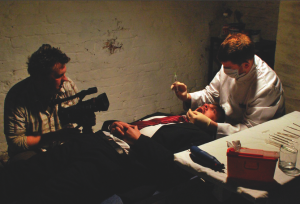
By J.P. Wade
What are some similarities and differences between the American avant-garde of the early 1970s and the Punk or No Wave filmmaking in the late 1970s? Address the following areas:
Aesthetic similarities and differences (which filmmakers do the cite as influences, which filmmakers do they reject?), Technological similarities and differences, Economic similarities and differences, Social similarities and differences.
As James Nares clearly states, "There was a conscious separation between ourselves and the Michael Snows and Jonas Mekases." Nares and the No Wave filmmakers, he says, were more ingrained in the punk music scene, and music in general. Where it seemed like the avant-garde at the time was art for art's sake, structuralist filmmaking, the No Wave filmmakers were out to get a rise out of people and make films that were meant to be seen as spectacles unto themselves.
The No-Wavers favored Super film not only because it was easy to use, but also because it was cheap to use. Coupled with relative inexperience and loose scripting, many of the No Wave films had a 'home movies meets 'forced naturalism'' feel to them. This is not unlike Jonas Mekas' diary films, despite the former being somewhat scripted. Each of these were shot seemingly haphazardly by design on cheap film stock. Due to budgetary restraints, each had to use what they had at the time.
Yet, while the No Wave filmmakers shared certain similarities with Jonas Mekas and others, they largely rejected Mekas' style of filmmaking in favor of the French New Wave and filmmakers like Andy Warhol. Amos Poe's "Unmade Beds" is a remake of Jean-luc Godard's film "Breathless", and Poe made the film with the intent of trying to replicate the French New Wave in New York.
http://pcjlblog.blogspot.com/2008/04/avant-garde-vs-punk-filmmaking.html
Embodying the DIY Spirit - Film Rebels And No Wave Cinema...
By Kimberly Bryant
The do-it-yourself spirit can take myriad shapes: from basic home renovation projects or more adventurous, creative projects like the eye-popping art made at Burning Man, DIY's core essence remains to make something with our own two hands, in our own unique way. We'll focus on the role the DIY spirit has played in experimental film movements like No Wave -- and how pushing the boundaries of taste is a lesson for all of us in creative risk-taking.

Creative risks are often born from working with limitations, whether self-imposed or externally-imposed. When we're forced to take matters into our own hands, anything can happen -- on the canvas, movie screen, or plays. (Photo by Kimberly Bryant.)
Burning Man's DIY spirit: building community
Part of what forms the invisible, yet felt, thread that connects everyone at Burning Man is the shared experience of relying on self, making art from the ground up, and pitching in. Many of the 10 principles capture the ethos of DIY, including using your talents and skills to create and contribute in whatever way possible -- self-reliance, self-expression, and participation are all intrinsic to DIY projects. Contributing to Burning Man's DIY spirit is part of what creates its sense of community.
No Wave movement
For me, the DIY spirit shows some of its greatest potential when applied to filmmaking. While I enjoy seeing any type of DIY project (from simple crafts to clothing), I'm truly inspired when I experience a film that pushes the boundaries both aesthetically and conceptually by virtue of low budgets and bravery. Film naturally lends itself to the rough and ready essence of DIY; as one of our most expensive creative mediums, DIY's hands-on, lo-fi ethos makes it accessible to anyone with determined desire to grab a video camera and run with it.

Having a lens this big (and expensive) does not make you more of filmmaker, photographer, or man (as it were); it's what you do with your equipment that counts...(Photo by Kimberly Bryant.)
Often, the creative nature of independent film is credited with the rise in technological advancements, and digital video cameras that are easy for the average layman to use effectively. However, DIY filmmaking has been in existence long before the recent explosion of digital equipment; evidence of this can be seen in the documentary Blank City, which covers the movement of No Wave cinema in New York during the mid-70s to mid-80s. Filmmakers like Jim Jarmusch and John Waters took movie matters into their own hands by using their lack of money to their creative advantage -- they simply began making movies with whatever they had. This included doing last minute, impromptu shoots, using their friends (who usually lacked acting experience) as cast members, using inexpensive, Super 8 video cameras, and thinking outside the box in terms of plot (having a discernible storyline was clearly not a requirement). The result? Experimental filmmaking at its most vulgar, exciting, and rebellious. While the No Wave films might not be your cup of tea, they're certainly original pieces of work, made with guts -- and gusto.
What interests me most about the No Wave movement -- and other movements that followed, such as Dogme 95 -- is how the DIY mentality of just a few filmmakers created a domino effect: as word spread, and like-minds came together, collaboration ensued, and a veritable movement was born. This is the power of grassroots creative efforts. The films that came out of the No Wave period are certainly not for everyone; in fact, most of them are fairly off-putting in nature -- but that was their intent: to challenge, to question, to dare to show life's extremes.
http://ignitechannel.com/films/embodying-diy-spirit-part-2-film-rebels/
Ten Principles of Burning Man: Can They Be Used As An Ethos For Independent Filmmaking?...

Burning Man Founder Larry Harvey wrote the Ten Principles in 2004 as guidelines for the newly-formed Regionals Network. They were crafted not as a dictate of how people should be and act, but as a reflection of the community's ethos and culture as it had organically developed since the event's inception.
Radical Inclusion
Anyone may be a part of Burning Man. We welcome and respect the stranger. No prerequisites exist for participation in our community.
Gifting
Burning Man is devoted to acts of gift giving. The value of a gift is unconditional. Gifting does not contemplate a return or an exchange for something of equal value.
Decommodification
In order to preserve the spirit of gifting, our community seeks to create social environments that are unmediated by commercial sponsorships, transactions, or advertising. We stand ready to protect our culture from such exploitation. We resist the substitution of consumption for participatory experience.
Radical Self-reliance
Burning Man encourages the individual to discover, exercise and rely on his or her inner resources.
Radical Self-expression
Radical self-expression arises from the unique gifts of the individual. No one other than the individual or a collaborating group can determine its content. It is offered as a gift to others. In this spirit, the giver should respect the rights and liberties of the recipient.
Communal Effort
Our community values creative cooperation and collaboration. We strive to produce, promote and protect social networks, public spaces, works of art, and methods of communication that support such interaction.
Civic Responsibility
We value civil society. Community members who organize events should assume responsibility for public welfare and endeavor to communicate civic responsibilities to participants. They must also assume responsibility for conducting events in accordance with local, state and federal laws.
Leaving No Trace
Our community respects the environment. We are committed to leaving no physical trace of our activities wherever we gather. We clean up after ourselves and endeavor, whenever possible, to leave such places in a better state than when we found them.
Participation
Our community is committed to a radically participatory ethic. We believe that transformative change, whether in the individual or in society, can occur only through the medium of deeply personal participation. We achieve being through doing. Everyone is invited to work. Everyone is invited to play. We make the world real through actions that open the heart.
Immediacy
Immediate experience is, in many ways, the most important touchstone of value in our culture. We seek to overcome barriers that stand between us and a recognition of our inner selves, the reality of those around us, participation in society, and contact with a natural world exceeding human powers. No idea can substitute for this experience.
http://www.burningman.com/whatisburningman/about_burningman/principles.html#.U4fMmpUnJ9B
Why Cinema Of Transgression Director Nick Zedd Stayed Underground...
This summary is not available. Please
click here to view the post.
Subscribe to:
Posts (Atom)
